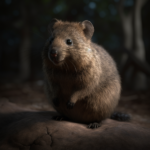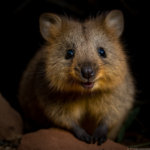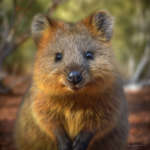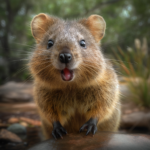Quokkas and wombats are two fascinating creatures that are native to Australia. While they may share some similarities, they are also quite different in many ways. Quokkas are small marsupials known for their friendly and approachable nature, often referred to as the “happiest animal on earth.” On the other hand, wombats are larger, stocky marsupials known for their burrowing abilities and unique backward-facing pouches. In this article, we will explore the characteristics, habitats, and behaviors of these two adorable Australian animals, and delve into the quokka vs wombat debate to see how they stack up against each other. So, let’s dive in and discover more about these fascinating creatures!
Key Takeaways
- Quokkas and wombats are both unique and adorable Australian animals.
- Quokkas are small marsupials known for their friendly and photogenic nature.
- Wombats are larger marsupials with a sturdy build and a burrowing lifestyle.
- Quokkas are found mainly in Western Australia, while wombats are found in various parts of Australia.
- Both quokkas and wombats are protected species and face threats from habitat loss and human activities.
- Quokkas are known for their smiley appearance, while wombats are known for their strong digging abilities.
Understanding the Quokka
The quokka is a small marsupial native to Western Australia. Known for its friendly and photogenic nature, the quokka has gained popularity as one of the most adorable creatures on the planet. In this section, we will delve into the origin and habitat of the quokka, explore its physical characteristics, and uncover its fascinating behavior and lifestyle.
A. Origin and Habitat of the Quokka
The quokka is endemic to the southwestern region of Western Australia, specifically found on Rottnest Island, Bald Island, and some parts of the mainland. These islands provide a perfect sanctuary for these adorable creatures, as they are free from predators and have an abundance of vegetation for their sustenance.
Quokkas have adapted well to their island habitats, which consist of dense forests, scrublands, and grassy areas. They are excellent climbers and can navigate through trees and shrubs with ease. Their ability to survive in such diverse environments showcases their remarkable adaptability.
B. Physical Characteristics of the Quokka
Quokkas are small in size, measuring around 40 to 54 centimeters in length and weighing between 2.5 to 5 kilograms. They have a stocky build, with a round face and short, rounded ears. Their fur is coarse and usually brown-gray in color, with lighter shades on their undersides.
One of the most distinctive features of the quokka is its cute, smiling face. Their mouth appears to be upturned, giving them a perpetually happy expression. This unique feature has earned them the title of “the happiest animal on Earth.”
C. Behavior and Lifestyle of the Quokka
Quokkas are primarily nocturnal animals, meaning they are most active during the night. However, they can also be seen foraging during the day, especially in areas with less human activity. They are herbivores, feeding on a variety of plants, leaves, and grasses.
These social creatures are often found in small family groups, known as “mobs.” Within these mobs, quokkas exhibit a hierarchical structure, with dominant males leading the group. They communicate with each other through a series of vocalizations and body language, such as hissing, barking, and boxing.
Quokkas are known for their friendly and curious nature, often approaching humans without fear. This behavior has made them a popular attraction for tourists visiting Rottnest Island. However, it is important to note that they are wild animals and should be observed from a distance to ensure their safety and well-being.
In terms of reproduction, female quokkas have a unique reproductive strategy called “delayed implantation.” After mating, the fertilized egg remains dormant for several months before implanting in the uterus. This adaptation allows the female to time the birth of her young during favorable conditions, such as when food is abundant.
In conclusion, the quokka is a fascinating marsupial with a rich history and unique characteristics. Its origin and habitat in Western Australia, physical appearance, and friendly behavior make it a beloved member of the Australian wildlife. Understanding the quokka’s behavior and lifestyle provides us with a deeper appreciation for this remarkable creature.
Unraveling the Wombat
A. Origin and Habitat of the Wombat
The wombat, a fascinating marsupial native to Australia, has a rich history and a unique habitat. Let’s delve into the origins and habitat of this intriguing creature.
Origins of the Wombat
The wombat belongs to the family Vombatidae and is closely related to koalas and kangaroos. These furry creatures have been around for millions of years, with fossil evidence dating back to the Early Pleistocene era. Wombats are endemic to Australia, meaning they are found nowhere else in the world.
Habitat of the Wombat
Wombats are well adapted to a variety of habitats, including forests, grasslands, and even alpine regions. They can be found in different parts of Australia, from the coastal areas of Queensland and New South Wales to the mountainous regions of Victoria and Tasmania.
Wombats are burrowers and are known for their impressive digging skills. They create complex networks of burrows, which serve as their homes and provide protection from predators and extreme weather conditions. These burrows can be quite extensive, with some reaching up to 30 meters in length!
B. Physical Characteristics of the Wombat
The wombat is a robust and sturdy marsupial, with several distinctive physical characteristics that set it apart from other animals. Let’s take a closer look at these features.
Size and Appearance
Wombats are medium-sized marsupials, with an average length of around 1 meter and a weight ranging from 20 to 35 kilograms. They have a stocky build, with short legs and a broad head. Their fur varies in color, ranging from sandy brown to dark brown or black, depending on the species.
One of the most notable features of the wombat is its powerful claws. These claws are perfectly adapted for digging burrows and can be used for defense if needed. Wombats also have a tough, leathery skin on their rumps, which acts as a natural armor against predators.
Adaptations
Wombats have several unique adaptations that help them thrive in their environment. One such adaptation is their backward-facing pouch. Unlike most marsupials, the wombat‘s pouch opens towards the rear, which prevents dirt and debris from entering while digging.
Another remarkable adaptation is their teeth. Wombats have strong, continuously growing incisors that enable them to gnaw on tough vegetation, such as roots and bark. This adaptation is essential, as their diet primarily consists of grasses, herbs, and shrubs.
C. Behavior and Lifestyle of the Wombat
Wombats are known for their solitary and nocturnal lifestyle. Let’s explore their behavior and some interesting aspects of their lives.
Nocturnal Habits
Wombats are primarily active during the night, spending their days resting in their burrows. They emerge at dusk to forage for food, using their keen sense of smell to locate vegetation. Wombats are herbivores and have a slow metabolism, allowing them to extract maximum nutrients from their diet.
Social Behavior
While wombats are generally solitary animals, they do have overlapping home ranges. However, they are not particularly social and prefer to keep to themselves. They mark their territories using scent glands located on their rumps, leaving behind distinctive odors to communicate with other wombats.
Reproduction and Lifespan
Wombats have a unique reproductive system. Females have a backward-facing pouch, similar to their forward-facing pouch, where they carry their young. After a gestation period of around 20 to 30 days, a single joey is born and crawls into the pouch, where it continues to develop for several months.
The lifespan of a wombat can vary depending on the species and environmental factors. On average, wombats live for about 5 to 15 years in the wild, although some individuals have been known to live up to 20 years in captivity.
In conclusion, wombats are fascinating creatures with a rich history and unique adaptations. Their origins in Australia and their ability to thrive in various habitats make them an integral part of the Australian wildlife ecosystem. Understanding their physical characteristics, behavior, and lifestyle helps us appreciate the wonders of nature and the diversity of life on our planet.
Quokka vs Wombat: A Comparative Analysis
A. Comparing Physical Attributes: Quokka vs Wombat
When it comes to the animal kingdom, there are countless fascinating creatures to explore. In this article, we will delve into the world of marsupials and compare two unique Australian species: the quokka and the wombat. While both of these animals belong to the marsupial family, they have distinct physical attributes that set them apart.
Quokka Characteristics
The quokka, also known as the “happiest animal on Earth,” is a small marsupial that measures around 16 to 21 inches in length and weighs between 6.6 to 11 pounds. They have a round face with a short snout, small rounded ears, and a compact body. One of their most distinguishing features is their friendly and approachable expression, which has earned them the title of the “world’s happiest animal.”
Wombat Features
On the other hand, wombats are larger and sturdier in comparison. They can grow up to 3 feet in length and weigh anywhere between 44 to 77 pounds. Wombats have a more robust build with a barrel-shaped body, short legs, and a broad head. Their fur is coarse and varies in color from sandy brown to dark brown or black, depending on the species.
B. Lifestyle Differences: Quokka vs Wombat
While quokkas and wombats may share the same continent, their lifestyles differ significantly. Let’s take a closer look at how these marsupials spend their days.
Quokka Behavior
Quokkas are known for their sociable nature and are often found in groups, known as mobs. They are primarily herbivores, feeding on a variety of vegetation such as grasses, leaves, and bark. Quokkas are also excellent climbers and can often be seen perched on tree branches. Despite their small size, they are agile and can hop like kangaroos, using their powerful hind legs.
Wombat Behavior
Wombats, on the other hand, are solitary creatures that prefer a more independent lifestyle. They are primarily nocturnal, spending their nights foraging for food. Wombats are herbivores as well, with a diet consisting mainly of grasses, roots, and bark. Unlike quokkas, wombats are excellent diggers and have powerful claws that allow them to create extensive burrow systems. These burrows serve as their shelter and protection from predators.
C. Habitat and Adaptation: Quokka vs Wombat
The habitat and adaptations of quokkas and wombats are closely tied to their unique lifestyles. Let’s explore how these marsupials have adapted to their environments.
Quokka Habitat
Quokkas are native to the southwestern region of Western Australia, where they inhabit dense forests, scrublands, and coastal heathlands. They are well-adapted to their habitat, as their small size and agile nature allow them to navigate through the undergrowth and climb trees when necessary. Quokkas have also developed the ability to survive on minimal water, making them well-suited to the arid conditions of their environment.
Wombat Habitat
Wombats can be found in various habitats across Australia, including forests, woodlands, and grasslands. They are particularly prevalent in the southeastern parts of the country. Wombats have adapted to their habitat by developing strong limbs and claws, which enable them to dig extensive burrows. These burrows not only provide shelter but also help regulate their body temperature during extreme weather conditions.
In conclusion, while both quokkas and wombats are fascinating marsupials native to Australia, they have distinct physical attributes, lifestyles, and adaptations. Understanding these differences allows us to appreciate the diversity of the animal kingdom and the remarkable ways in which species have evolved to thrive in their respective environments.
Debunking Myths: Is a Quokka a Kangaroo?
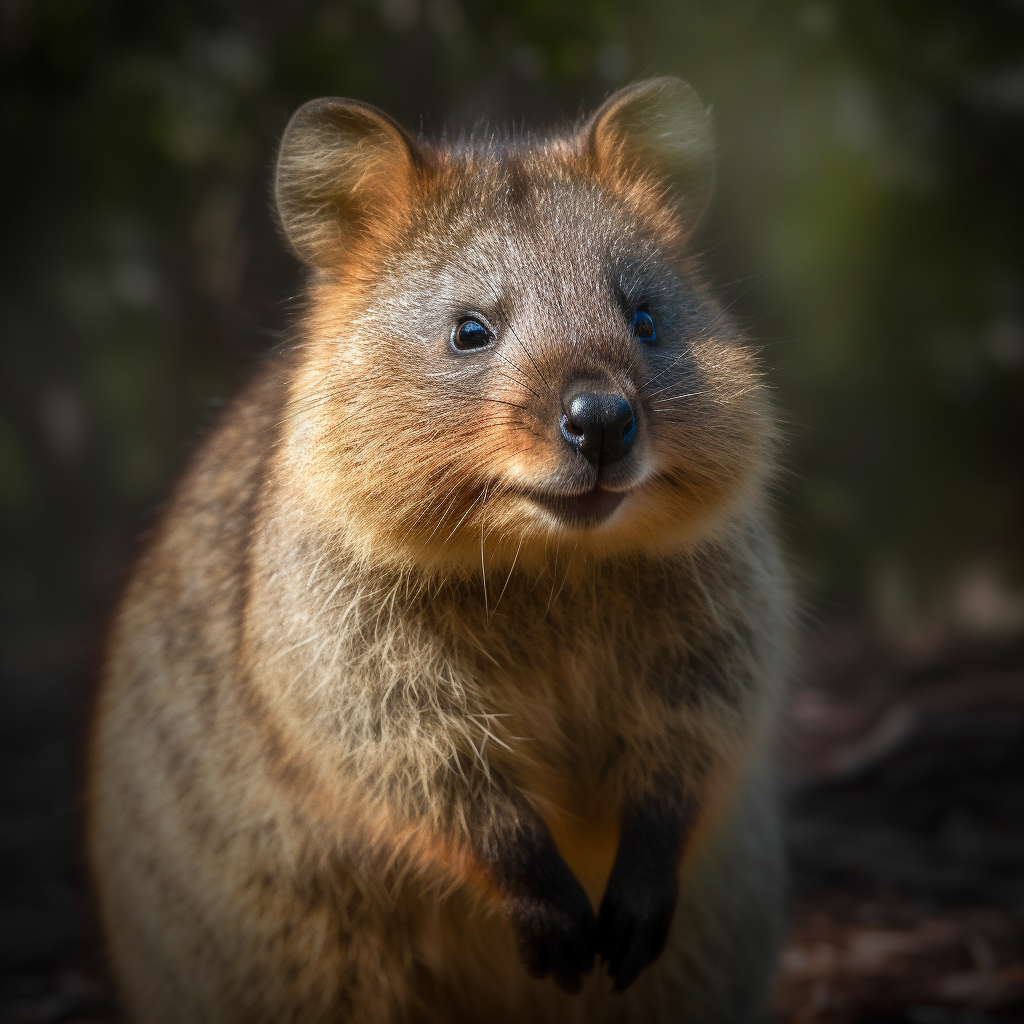
A. Understanding the Marsupial Family
When it comes to Australian wildlife, marsupials are a fascinating group of animals. They are characterized by their unique reproductive system, where females carry their young in a pouch. While kangaroos are perhaps the most well-known marsupials, there is often confusion surrounding the quokka and its relation to the kangaroo.
To clarify, quokkas and kangaroos both belong to the marsupial family, but they are distinct species. Quokkas are part of the macropod family, which includes kangaroos, wallabies, and wallaroos. However, quokkas are not kangaroos themselves. They are a separate species known as Setonix brachyurus.
B. Distinguishing Features between Quokka and Kangaroo
While quokkas and kangaroos share some similarities due to their common marsupial heritage, there are several distinguishing features that set them apart.
-
Size: Quokkas are much smaller than kangaroos. On average, quokkas measure around 16-21 inches (40-53 cm) in length and weigh between 6.6-11 pounds (3-5 kg). Kangaroos, on the other hand, can reach impressive heights of up to 6.6 feet (2 meters) and weigh anywhere from 90 to 200 pounds (40-90 kg).
-
Appearance: Quokkas have a round, compact body with short legs and a short tail. They have a stocky build and are covered in coarse fur that ranges in color from brown to gray. Kangaroos, on the other hand, have a more elongated body, powerful hind legs, and a long tail. Their fur can vary in color, including shades of brown, gray, and red.
-
Habitat: Quokkas are found primarily in Western Australia, particularly on Rottnest Island and a few other nearby islands. They inhabit dense vegetation and are well-adapted to a coastal environment. Kangaroos, on the other hand, have a much wider distribution across Australia, inhabiting various habitats such as grasslands, woodlands, and forests.
-
Behavior: Quokkas are known for their friendly and curious nature. They are often referred to as the “happiest animal in the world” due to their seemingly smiling facial expression. Quokkas are generally docile and are not afraid of humans, which has led to their popularity among tourists. Kangaroos, on the other hand, are more cautious and tend to exhibit a more reserved behavior. They are known for their powerful hopping ability and can cover large distances in a single bound.
In conclusion, while quokkas and kangaroos are both marsupials, they are distinct species. Quokkas are smaller in size, have a different appearance, inhabit different habitats, and exhibit different behaviors compared to kangaroos. It’s important to appreciate the unique characteristics of each species and avoid confusing them with one another.
Are Quokkas and Wombats Related?
A. Tracing the Evolutionary Links
When it comes to the animal kingdom, understanding the evolutionary relationships between different species can be a fascinating journey. In the case of quokkas and wombats, both belong to the marsupial family, which is unique to Australia. Marsupials are a diverse group of mammals that carry their young in a pouch. However, despite their shared marsupial heritage, quokkas and wombats belong to different branches of the marsupial family tree.
Quokkas are members of the macropod family, which includes kangaroos and wallabies. These small, herbivorous marsupials are known for their friendly and curious nature, making them a popular attraction for tourists visiting Rottnest Island in Western Australia.
Wombats, on the other hand, belong to the family Vombatidae. These sturdy, burrowing marsupials are known for their stocky build and powerful claws, which they use to dig extensive underground burrows. Wombats can be found in various parts of Australia, including Tasmania.
B. Similarities and Differences in the Marsupial Family
While quokkas and wombats share a common marsupial ancestry, there are several notable differences between them. Let’s take a closer look at their similarities and distinctions:
Similarities:
- Marsupial Reproduction: Both quokkas and wombats exhibit marsupial reproduction, which involves giving birth to relatively undeveloped young and nurturing them in a pouch until they are mature enough to survive independently.
- Herbivorous Diet: Quokkas and wombats are herbivores, but their dietary preferences differ. Quokkas primarily feed on grasses, leaves, and stems, while wombats have a more specialized diet consisting mainly of grasses, roots, and bark.
Differences:
- Habitat: Quokkas are found in the southwestern region of Western Australia, particularly on Rottnest Island and a few neighboring islands. Wombats, on the other hand, inhabit various parts of Australia, including Tasmania, Victoria, and New South Wales.
- Behavior: Quokkas are known for their friendly and curious nature, often approaching humans without fear. Wombats, on the other hand, are more solitary and nocturnal, spending most of their time in their burrows.
- Physical Characteristics: Quokkas are small marsupials, measuring around 40-54 centimeters (16-21 inches) in length and weighing between 2.5-5 kilograms (5.5-11 pounds). Wombats, on the other hand, are larger and more robust, with a length of around 80-120 centimeters (31-47 inches) and a weight ranging from 20-35 kilograms (44-77 pounds).
- Adaptations: Quokkas have adapted to their island habitat by developing the ability to survive on limited water sources. They can obtain moisture from the vegetation they consume, reducing their dependence on external water sources. Wombats, on the other hand, have strong, sturdy bodies and powerful claws, which enable them to dig extensive burrows for shelter and protection.
In conclusion, while quokkas and wombats share a common marsupial heritage, they belong to different branches of the marsupial family tree. Quokkas are part of the macropod family, known for their friendly nature and small size, while wombats belong to the family Vombatidae, characterized by their burrowing habits and stocky build. Understanding the similarities and differences between these unique Australian marsupials adds to our appreciation of the diverse wildlife found in this fascinating continent.
Quokka and Wombat: Interaction with Humans
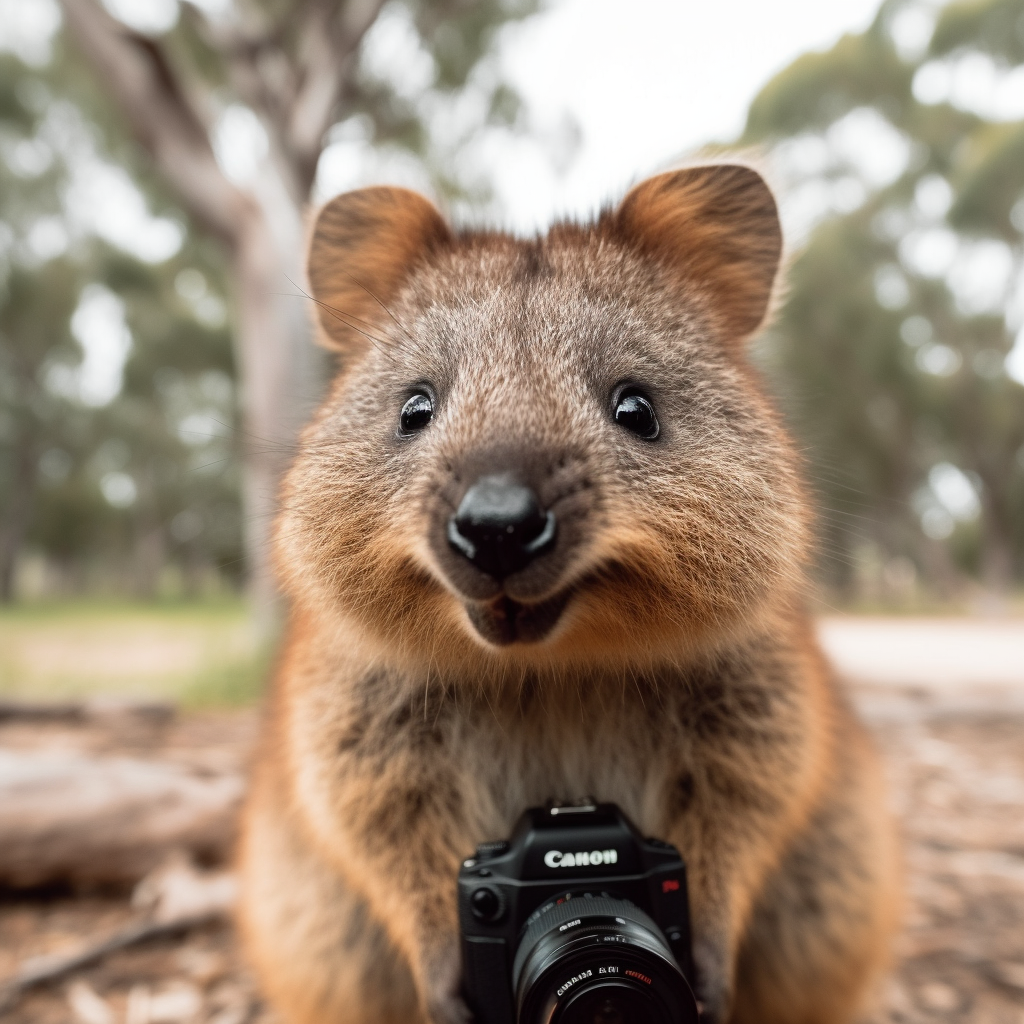
A. The Quokka: The Happiest Animal on Earth?
When it comes to interacting with humans, the quokka is often referred to as the “happiest animal on Earth.” These small marsupials, native to Western Australia, have gained quite a reputation for their friendly and approachable nature. Quokkas are known to approach humans without fear, making them a popular attraction for tourists visiting Rottnest Island, where a large population of quokkas resides.
One of the reasons why quokkas are so friendly towards humans is their lack of natural predators on the island. This has allowed them to develop a trusting behavior towards humans over time. They are not afraid to approach people in search of food or simply out of curiosity. However, it’s important to note that while quokkas may seem friendly, it is crucial to respect their space and not disturb them in any way.
B. The Wombat: The Burrowing Expert
Unlike the quokka, wombats are not known for their interaction with humans. These sturdy marsupials are primarily nocturnal and spend most of their time underground in their burrows. Wombats are excellent diggers and have a strong instinct to burrow, which is why they are often referred to as the “burrowing experts” of the animal kingdom.
Due to their solitary nature and preference for a nocturnal lifestyle, wombats tend to avoid human interaction. They are not typically found in areas with high human populations and are more commonly spotted in remote regions of Australia. However, there have been instances where wombats have approached humans, especially if they have become accustomed to human presence in their habitat.
It’s important to note that while wombats may appear cute and cuddly, they are wild animals and should be treated with caution and respect. It is best to observe them from a distance and avoid any attempts to approach or touch them.
In summary, while quokkas are known for their friendly nature and willingness to interact with humans, wombats are more reserved and tend to avoid human contact. Both animals have their unique characteristics and behaviors when it comes to interacting with humans, and it is important to appreciate and respect their natural instincts and habitats.
Conservation Status: Quokka and Wombat
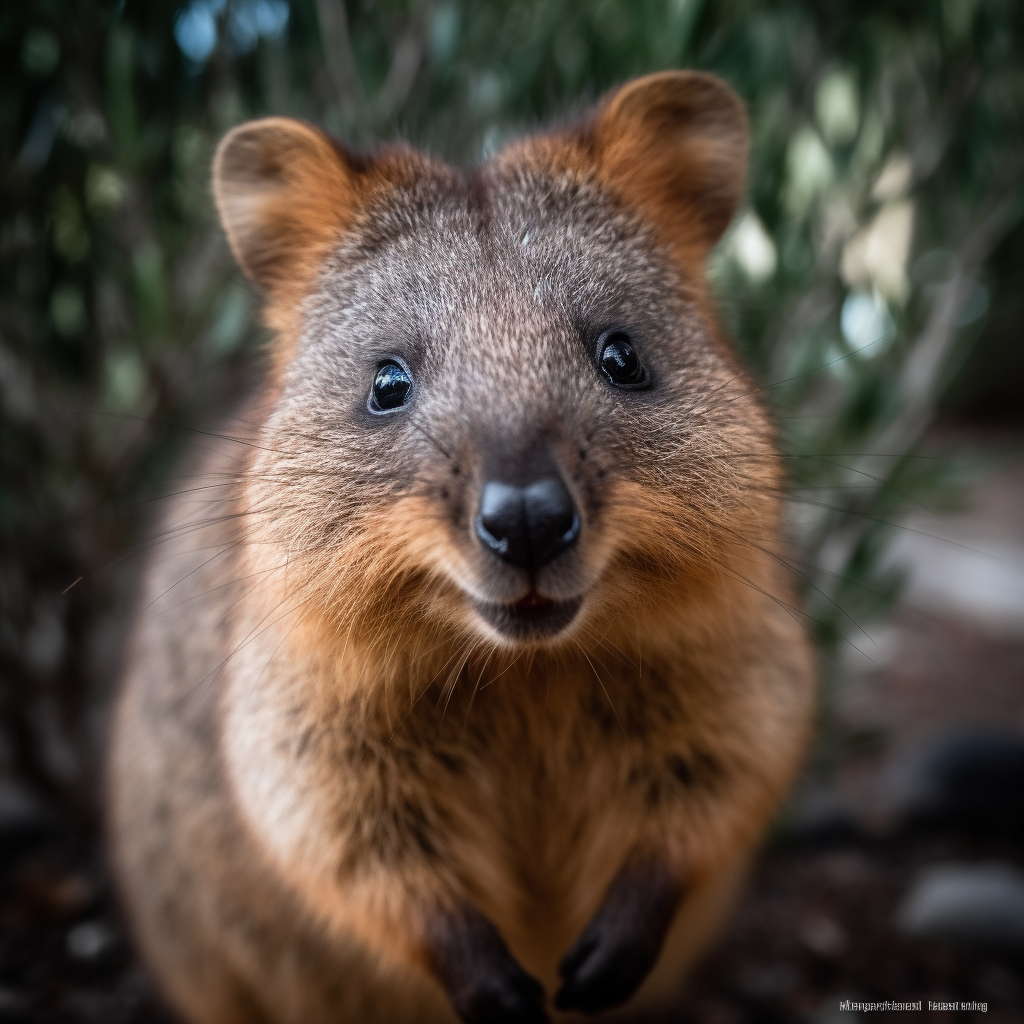
A. Threats to the Quokka Population
The quokka, a small marsupial native to Western Australia, faces several threats to its population. One of the main concerns is habitat loss due to human activities such as urbanization and land clearing for agriculture. As more land is developed, the quokka’s natural habitat diminishes, leaving them with less space to roam and find food.
Another significant threat to the quokka population is predation by introduced species. Foxes and feral cats, which were introduced to Australia by humans, pose a significant risk to quokkas. These predators hunt quokkas and their young, leading to a decline in their numbers.
Additionally, climate change is also impacting the quokka population. Rising temperatures and changes in rainfall patterns can affect the availability of food and water sources for quokkas. This can lead to malnutrition and dehydration, making them more vulnerable to other threats.
B. Threats to the Wombat Population
Wombats, another marsupial species found in Australia, also face various threats to their population. Similar to quokkas, habitat loss is a significant concern for wombats. The clearing of land for agriculture and urban development reduces the availability of suitable habitats for wombats to live and forage.
Another threat to wombats is road accidents. Wombats are known to wander onto roads, especially at night, increasing their chances of being hit by vehicles. This poses a significant risk to their population, as road accidents can result in fatal injuries.
Disease is yet another threat to wombats. Sarcoptic mange, a skin disease caused by parasitic mites, can have devastating effects on wombat populations. The disease causes severe itching, hair loss, and skin infections, ultimately leading to the death of affected wombats if left untreated.
C. Conservation Efforts for Quokka and Wombat
Conservation efforts are crucial to protect both the quokka and wombat populations and ensure their long-term survival. Various organizations and government agencies are working towards preserving their habitats and implementing measures to mitigate the threats they face.
One of the key conservation strategies is the establishment of protected areas and national parks. These protected areas provide a safe haven for quokkas and wombats, allowing them to thrive without the risk of habitat destruction or hunting.
Efforts are also being made to control and manage introduced predators. Programs aimed at reducing the populations of foxes and feral cats have been implemented to minimize their impact on quokkas and wombats. This involves trapping, baiting, and other methods to control predator numbers.
To address the issue of road accidents, wildlife crossings and fencing are being installed in areas where wombats are known to cross roads frequently. These measures help reduce the risk of collisions between wombats and vehicles, protecting both the wombats and motorists.
Furthermore, research and monitoring programs are essential for understanding the population dynamics, behavior, and health of quokkas and wombats. By studying these marsupials, scientists can gather valuable data to inform conservation strategies and ensure their long-term survival.
In conclusion, the quokka and wombat populations face various threats, including habitat loss, predation, climate change, road accidents, and disease. However, through conservation efforts such as protected areas, predator control, wildlife crossings, and research programs, we can work towards safeguarding these unique marsupials and preserving their natural habitats for future generations.
Conclusion
In conclusion, both quokkas and wombats are fascinating creatures that inhabit the unique landscapes of Australia. While they may share some similarities, such as being marsupials and having a herbivorous diet, there are also distinct differences between the two. Quokkas are known for their friendly and curious nature, often approaching humans for interaction, while wombats are more solitary and prefer to burrow underground. Quokkas are smaller in size and have a distinctive smile, earning them the title of the “happiest animal in the world,” while wombats are larger and have a sturdy build. Both animals play important roles in their ecosystems, with quokkas being important seed dispersers and wombats being ecosystem engineers. Overall, whether you’re captivated by the adorable quokka or the resilient wombat, both animals contribute to the rich biodiversity of Australia and deserve our admiration and protection.
Frequently Asked Questions
What is the difference between a wombat and a quokka?
The main difference between a wombat and a quokka lies in their size, habitat, and behavior. Wombats are larger, heavier, and have a more robust build compared to quokkas. They are burrowing animals and live in a variety of habitats in Australia. On the other hand, quokkas are smaller, lighter, and are known for their friendly and curious nature. They are found on some smaller islands off the coast of Western Australia.
How does the wombat compare to the quokka in terms of size and appearance?
Wombats are significantly larger and heavier than quokkas. An adult wombat can weigh between 20 to 35 kilograms and grow up to 1 meter in length, while an adult quokka weighs around 2.5 to 5 kilograms and is approximately 40 to 54 cm long. In terms of appearance, wombats have a more robust and compact body with a large head, while quokkas have a more rounded and smaller body with a small head and large eyes.
What is a quokka in Australia?
A quokka is a small marsupial that is native to Australia. They are found mainly on some smaller islands off the coast of Western Australia, particularly on Rottnest Island and Bald Island. Known for their friendly and curious nature, quokkas have become a popular attraction for tourists.
Is a quokka a type of kangaroo?
While quokkas are often referred to as the ‘world’s happiest animal‘ due to their friendly nature and the shape of their mouth, which often looks like they’re smiling, they are not a type of kangaroo. However, they are part of the same family, Macropodidae, which includes kangaroos and wallabies.
Are quokkas and wombats related?
Quokkas and wombats are both marsupials, meaning they carry their young in a pouch, but they belong to different families. Quokkas are part of the Macropodidae family, which includes kangaroos and wallabies, while wombats are part of the Vombatidae family.
What are the main characteristics of a quokka?
Quokkas are small marsupials with a body length of 40 to 54 cm and a weight of 2.5 to 5 kg. They have a rounded body, a small head, large eyes, and a brown coat. They are known for their friendly and curious nature. Quokkas are herbivores and mainly eat leaves and bark.
What are the main features of a wombat?
Wombats are large marsupials with a body length of up to 1 meter and a weight of 20 to 35 kg. They have a robust and compact body, a large head, small eyes, and a thick brown or grey coat. Wombats are burrowing animals and they are known for their ability to dig extensive burrow systems with their rodent-like front teeth and powerful claws.
What is the lifespan of a quokka and a wombat?
Quokkas have a lifespan of approximately 10 years in the wild, while wombats can live up to 15 years in the wild. However, both species can live longer in captivity.
What are the conservation efforts for quokkas and wombats?
Both quokkas and wombats are protected species in Australia. Conservation efforts for quokkas include habitat preservation, population monitoring, and control of predators and diseases. For wombats, conservation efforts include habitat preservation, rescue and rehabilitation of injured and orphaned wombats, and research on wombat diseases.
How do quokkas and wombats reproduce?
Quokkas and wombats are marsupials, meaning they give birth to underdeveloped young that continue to grow in the mother’s pouch. Quokkas have a gestation period of about one month and usually give birth to a single joey. Wombats have a gestation period of about 22 days and also usually give birth to a single joey.

